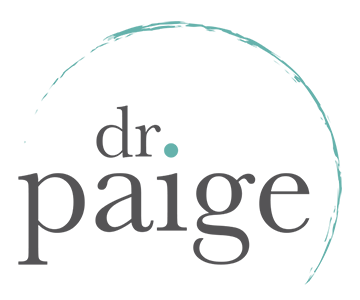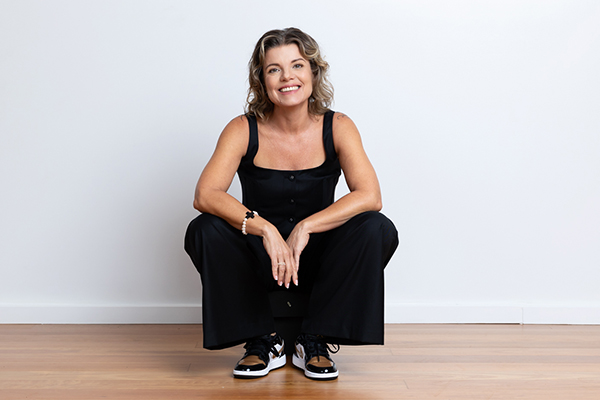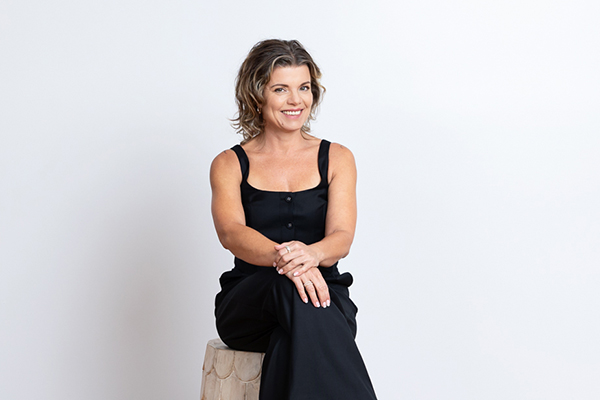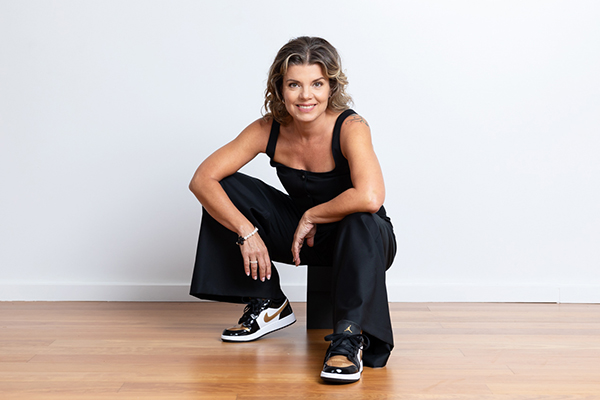Shifting Leadership Communication from Command to Curiosity
Leadership, and leadership communication, is evolving. The rules from even just five years ago (pre COVID) have shifted. In this episode of the Stories and Strategies for Public Relations and Marketing podcast, Paige Williams shares how we can transform communication and leadership effectiveness by asking the right questions and staying rooted in curiosity.
These are strategies that can enhance creativity, engagement, and resilience in your team, whether you’re leading a small group or a large organization.
Transcript
Doug Downs (00:06):
The owner of a window shade company hired a business consultant to help him grow his business. The consultant asked him, what business are you really in the window shade business? The owner replied, undaunted, the consultant asked, when someone walks into your store, why do they want a window shade? What are you really selling? So that caused the owner to pause for a moment. Why does someone want a window shade? He replied Well to control light. And then he thought a moment longer, they also want privacy. And that’s when it dawned on him, he was in the light control and privacy business, not the window shade business. And this was the moment that for his company, the little light went on, so to speak. The year was 1920. The business owner knew Venetian blinds had become popular in France, but no one really knew about them in the United States.
(01:06):
So he was one of the first introduced them in the US and that completely transformed him into a success. And the name of the business consultants, Mary Parker Follett, a woman in 1920, showing men how to run their companies by communicating with them in a way that was powerful and simple. Follett is often called the mother of modern management. Her contributions to organizational behaviour and organizational theory are so well respected today. Leadership expert Warren Bennis has said just about everything written today about leadership and organizations comes from Mary Parker Follett. Let me tell you another story to explain her style of thinking. Follett once told a story about two sisters fighting over an orange. Each was using a different cooking recipe with each calling for an orange to be used, but there was only one orange and neither wanted to go back to the grocery store to get another one.
(02:06):
They settled the argument by cutting the orange in half. Well, that didn’t work out for either sister. One needed the juice from the orange for her recipe. The other needed the peel By cutting the orange in half, neither had enough. Fett explained. The sisters used a distributive bargaining technique. That’s a zero sum game. One party gains only. What the other loses she suggested the two sisters should have used an integrative bargaining technique. Instead, integrative negotiations occur when the two parties collaborate to find a win-win solution to their dispute. How can both parties get something out of the deal? No one was managing this way in 1920. Mary Parker Follett was teaching it. Not bad for someone who couldn’t get into Harvard because she was a woman. Today on Stories and Strategies, good leadership communication promotes collaboration. It encourages innovative and advanced thinking. It builds trust and commitment. And let’s face it, no business can grow to its full height if there’s a glass ceiling in the way.
(03:29):
My name is Doug Downs. Special thank you off the top of the episode to Emily Burnham. Emily added stories and strategies to a list on pod chaser, which is kind of becoming the IDMB of podcasts. Really useful. Adding a podcast to a list there, helps others find it, and I really appreciate that. Thank you, Emily. My guest this week is Paige Williams joining today from Melbourne down under G’day, Paige.
Paige Williams (03:56):
Hey, how are you? Doug? Great to be with you. You this morning.
Doug Downs (03:59):
I’m good, and G’day is still, no Australian that I know actually says it, but it is an Australian saying, right?
Paige Williams (04:06):
It definitely is an Australian saying. Look, let’s be honest, I’m not Australian. I’m from the UK, but I’ve been here over 20 years and I’ve heard good day quite a few times in that time.
Doug Downs (04:15):
Fair enough, fair enough. Paige, you have your PhD in organizational behavior. You work with senior leaders around the world in business, government education. You’re an honorary fellow of the Centre for Wellbeing Science and an associate of the Melbourne Business School. You’ve authored five books with work featured in Psychology Today, smart company, Australian Financial Review and Human Resource Management. And really the secret sauce to your work, which is why I love you so much, is using neuroscience and psychology to help leaders see the rules they need to break in order to break through. And I love that phraseology too. So in
Paige Williams (04:59):
Oh, thank
Doug Downs (05:00):
You. Your newest book, the Leader’s Ecosystem. The first chapter is about asking the right questions, which again, my goodness, that hits the happy button in my brain when I hear it put that way, which doesn’t exist, by the way, if you know neuroscience and one of those right questions is what does good look like? Why is that so important?
Paige Williams (05:22):
Oh, what a great question to kick us off with Doug. Thank you. Right to it. Yeah, absolutely. So look, what does good look like means that we are open and curious to what’s emerging in front of us. We’re not assuming anything. We’re not locked into bias. We’re not jumping to conclusions. What we’re doing is we are aware and we are attention out, and we are noticing what’s actually going on here. And now that means what does good look like is a constant kind of, what do I want to say? It’s almost like it’s finding us our true north in this moment, in this context, and what’s going to help us make progress? What’s going to help us make connection? What’s going to help us ask the right questions that will help us uncover something new or help us make a decision about something that needs to be made?
(06:21):
So what does good look like is what I call a heuristic. It’s a guiding heuristic. It doesn’t try to give us answers, but it guides us in the right direction towards making progress and finding answers. And I think this idea of us using, I have a whole, almost like we call them Paige’isms in my life, but they’re like heuristics. And what does good look like is one of those heuristics because it helps us then navigate the complexity. It helps us navigate the uncertainty so that rather than being locked in by it, what we are is continually evolving with it and looking for what does good look like based on where we’re at right now, who we are with, and the emerging circumstances.
Doug Downs (07:09):
And the way you’ve described this touches this right away. It’s an ecosystem, the leader’s ecosystem name of the book. How does that apply to modern leadership?
Paige Williams (07:21):
Well, look, before I came into my academic career, I was a business leader. I led teams, I led organizations. I led across geographic boundaries and cultural boundaries and the complexities and the growing tension between leaders needing to deliver on the commercial needs of their role and the growing complexity of the human needs of their teams is getting more and more stretched. And so I’ve lived that experience, but then as I’ve also then stepped into academia and looked at, I’m also deeply involved in systems thinking and systems dynamics, which is where the ecosystem comes from really is the system is getting faster, it’s getting more complicated, and it’s getting more complex for leaders to lead in. And so this idea that what good leadership looked like 50 years ago, maybe even 10 years ago, maybe even five years ago, because when you think five years ago we were pre covid, those rules just don’t serve us anymore.
(08:27):
And yet they are deeply embedded in answering the question, what does good leadership look like? And we’ve got these paradigms that are no longer relevant because there isn’t one thing that can do everything with what modern leaders are being asked to lead. If you think about their context, if you think about the complexity of the human, the social systems, the political systems, and then the growing economic complexities, what good look like five years ago isn’t going to serve us now, which is why the ecosystem is exactly that. It’s an ecosystem of nine ideas that can serve leaders to then be able to respond and make progress with the emerging circumstances. Because importantly, Doug, the other thing that research is showing us is that because things are moving so much more quickly because volatile and they’re uncertain, actually trying to plan anything more than about 180 days in advance, it’s just kind of wishful thinking.
(09:32):
So you can set a guidance. It’s not to say throw out your five-year plan or throw out your strategy kind of process. But it is to say, do it and then hold it really lightly because you’ve got to be iterative. You’ve got to be adaptive. And so the ecosystem says leaders, you don’t have time to take yourself offline and do a deep dive into everything you feel you need to know to be a leader. What you need. And here comes another heuristic, is everything you need and nothing you don’t to respond to what is emerging in front of you and to get ahead of it so that you can guide your people to make the progress that’s needed. Understanding that what’s needed will change probably pretty quickly.
Doug Downs (10:14):
See, and I’m thinking through leadership communication, which for as long as I’ve been working, which is over four decades, has always been touted as extremely important. That’s that’s an ongoing line. It’s not like we woke up and suddenly decided that that’s been around a long, long time and the communication style has changed. But what you just said is build a plan, work the plan, but your words hold it lightly. Doesn’t that make it tough for my direct reports? And if I’m the leader of a large corporation for all the reports that come under those direct reports, if they’re all driving toward the plan as good employees should, how dare I hold it lightly?
Paige Williams (10:56):
Because holding it lightly doesn’t mean we’re not deeply committed to it. So one of the phrases I use is deeply committed, completely unattached. So we’re deeply committed to achieving the work that we need to achieve together. So what it is in terms of that mid to long-term strategic goal or the KPIs for this quarter, deeply committed, putting all our energy, our effort, our attention into achieving those, what we’re unattached to, is it being prescriptive in terms of how we get there? We understand that it might not be a straight line from here to there and that we’re going to have to deviate. We’re going to have to make changes. And so speaking that explicitly with our teams and saying, look, this is our start point, and we will keep moving in this way and in this direction until something emerges that tells us otherwise. And then we’re not going to blindly ignore it. Of course, we’re going to take in that new data. We’re going to adapt accordingly. So this is the holding it lightly. It’s not that we’re holding, we’re deeply committed to achieving what we need to achieve in our work together, but we’re unattached to how to get there. And what this avoids is it avoids us then getting locked into a certain way that actually takes us further and further away from where we need to be because we’re not in touch with the changing context around us, or we’re not prepared to say we need to change.
Doug Downs (12:22):
And that might actually be appealing to the stock analysts who want to see that have got a plan to get to the important KPIs, which is shareholder value. They might look at my flexibility and adaptability as being a positive in the end.
Paige Williams (12:37):
Absolutely. When we look at things like organizational resilience that has come out of the post covid years, that’s what we’re looking for. We know that Covid taught us that there isn’t, you can’t just kind of get locked and loaded in one direction because we need the ability, the adaptability to be able to respond and react and still make progress when the water is churning around us. And so I think that this adaptability, who can read anything right now without gen AI being in the mix somewhere? And this is again, a constantly evolving, fast changing context that leaders are going to need to get on board with, but becoming a subject matter expert isn’t the way to do it. The way to do it is to be able to lead in a way that’s open and adaptable and flexible and being able to be confident in that and give confidence to your people as you lead in that way.
Doug Downs (13:34):
And as you say that, I’m thinking through some political leaders that come to mind and are having success in terms of their popularity. And they don’t exude open and flexible. They’re more the boss type leader. Is that just a completely different philosophy, or can you be the boss within this leader’s ecosystem?
Paige Williams (13:54):
Look, can you be the boss? If we think about what traditional roles of leaders have been, it’s been command and control. When we think about where leadership theory and models grew up, it’s in the military where there are at times compelling reasons to have command and control leadership.
Doug Downs (14:19):
That’s right. That’s right.
Paige Williams (14:20):
We also know in the decades that have come since then in terms of leadership research, that that’s not how we get the most creative diverse perspective. We get the best. What we get is compliance. We don’t get commitment. We don’t get creativity. We don’t get ongoing engagement. And look, if you look at the military model kind of wasn’t needed. What they needed was compliance. What they needed was coordinated effort to reach a prescribed, a prescriptive outcome. But in the complexity of what we’re doing now as leaders, whether that’s in business organizations, whether you are leading your family, if you’re leading a teenager, I’m speaking to you right now, we need engagement. We need to partner with people if we’re going to hear their voices, if we’re going to benefit from their experience, from their perspectives on the world. And then as leaders still own what sales to own in making a decision about the best way forward.
(15:17):
So it’s not that we’re saying, okay, we are letting go of leadership, and it’s an all for everyone proposition, but what we are saying is leaders, we are open, we’re curious, we’re willing to listen, and then we’re willing also to own what’s asked to own, which is based on that make the decision about how we are hearing and seeing it is best to move forward, and we’re not going to please all the people all the time. That’s the reality of being a leader. But this command and control, this boss type leadership, look, there are some circumstances where it’s absolutely the right way to lead, and it’s an either or.
Doug Downs (15:53):
Yeah. Right.
Paige Williams (15:55):
But political leaders, I reckon that’s a whole other podcast, Doug.
Doug Downs (16:01):
Yeah. Yeah. If you had three minutes to explain to a group of senior executives what leadership communication looks like, how would you do that?
Paige Williams (16:13):
Well, I think I’d begin with framing out that we can put down the need to have all the answers. Because I think that that fundamental paradigm shift from thinking that as it’s a kind of a hero or heroin paradigm of leadership, where we need to come in like Batman, saving Gotham City and save the day, save the situation, save the meeting, save the project, whatever it is, we need to put that understanding of leadership down. If we’re able to do that, then communication that comes from a different understanding of leadership where it’s yes, we still have to own, as I just said, making the decision, making clear what the way forward is. But if we put down the need to have all the answers, then our style of communication shifts because actually we’re a lot more quiet. Where if we think about three styles of communicating as tell, show, and ask, we are much less telling, we’re much more asking, and we are much more interested in others showing us what they know, how they think it could go.
(17:28):
So the whole pattern of communication shifts. We hold silence for longer, don’t feel the need to fill it. We encourage contribution by asking open-ended generative questions. And we ask people to show us where they have experienced, and I love this, where they have experienced positive deviance. Now I’m going to unpack that in their world. So positive deviance is when in any system, when we are looking to find a way forward or solve a problem, there is something that is a positive outlier. It is deviant from the normal in a positive way. And what we do is when we ask questions as leaders, I love questions because I reckon they’re our most powerful tool. We take the attention span of our collective group, whether that’s our team or the person we’re talking to, or the whole organization that can be pretty scattered because they’re thinking about what’s going on in their world.
(18:29):
And because of the power dynamic of us as leaders, when we ask a question, we take that kind of scattered attention and get it focused around answering the question we’ve just posed. So if we ask a question that says, where is this working in our system? Where is there an outlier? Where despite being in the same complexities and challenges that we are in, there is something different going on there in a positively deviant way. So if we ask questions like this, then we start to get the collective wisdom of where the solutions are, not just from our experience, from the experience of the group. So rather than telling, we do much more asking, and we ask people to show us where they have seen positive deviance and let that be something that helps guide how we make progress. And where the way forward is,
Doug Downs (19:22):
It’s kind of the only real change in the world is positive deviance, right? It’s breaking the rules and doing something that others said you weren’t supposed to do.
Paige Williams (19:31):
Exactly. I love the idea of being deviant, like it’s the whole thing that sits underneath the rules. You need to break in order to break through and being positively deviant. It’s the subtitle of the Leader’s Ecosystem, A Guide to Leading Exceptionally. And when you think about what the exception is, it’s the exception to the rule. But what we’re looking to do is be the exception to the rule in a positively deviant way. Not be contained and controlled by systemic values or what we think we should do, but actually do the things that we know to be true and that we know will take us forward in the right way.
Doug Downs (20:05):
Picasso said, learn the rules like a professional, then learn how to break them like an artist. I’ve always loved that line.
Paige Williams (20:14):
Love that.
Doug Downs (20:15):
I’ve got one last question for you in your email signature, I have this habit, I look at people’s email signatures. I think it’s a character expose. You have a quote, the truth you need to hear with the love, you need to heed it. What does that mean?
Paige Williams (20:34):
I think that truth can be steely, truth can be steely, and it can, if not delivered from an intention of love, it can cut. And yet one of my, I won’t turn away from truth. Like if a truth is there, I find it very difficult not to speak it. And yet, as I’ve, I am in my fifties now, I know that I haven’t always done it in a way that means it can be received. And what I’ve learned in my journey is that when you deliver truth from an intention of love, there’s nothing in this for me. I’m sharing this with you. I’m telling you this because I want the best for you. Then it can be received. It will be received. And I’ve been amazed at the conversations I’ve been able to hold with the leaders and with teams and groups that are challenging conversations. They are the conversations that are needed. They are the truth. But because it’s coming, I’m holding a space of love. They’re able to have those conversations. So that’s where that comes from.
Doug Downs (21:48):
That’s an amazing 20 minutes. Imagine spending… That’s 20 minutes. Imagine spending several hours with one of Paige’s books. I encourage you to do that. Paige, thanks so much for your time today.
Paige Williams (22:00):
Oh, thank you, Doug. It’s been an absolute joy.
Doug Downs (22:04):
If you’d like to send a message to my guest, Paige Williams, we’ve got her contact information in the show notes and links to her five books, check one Out Stories and Strategies as a co-production of JGR Communications and Stories and Strategies, podcasts. We’d love it if you checked out our YouTube channel. Thank you to our producer, Emily Page, another gold star. And lastly, do us a favor forward this episode to one friend. Thanks for listening.





